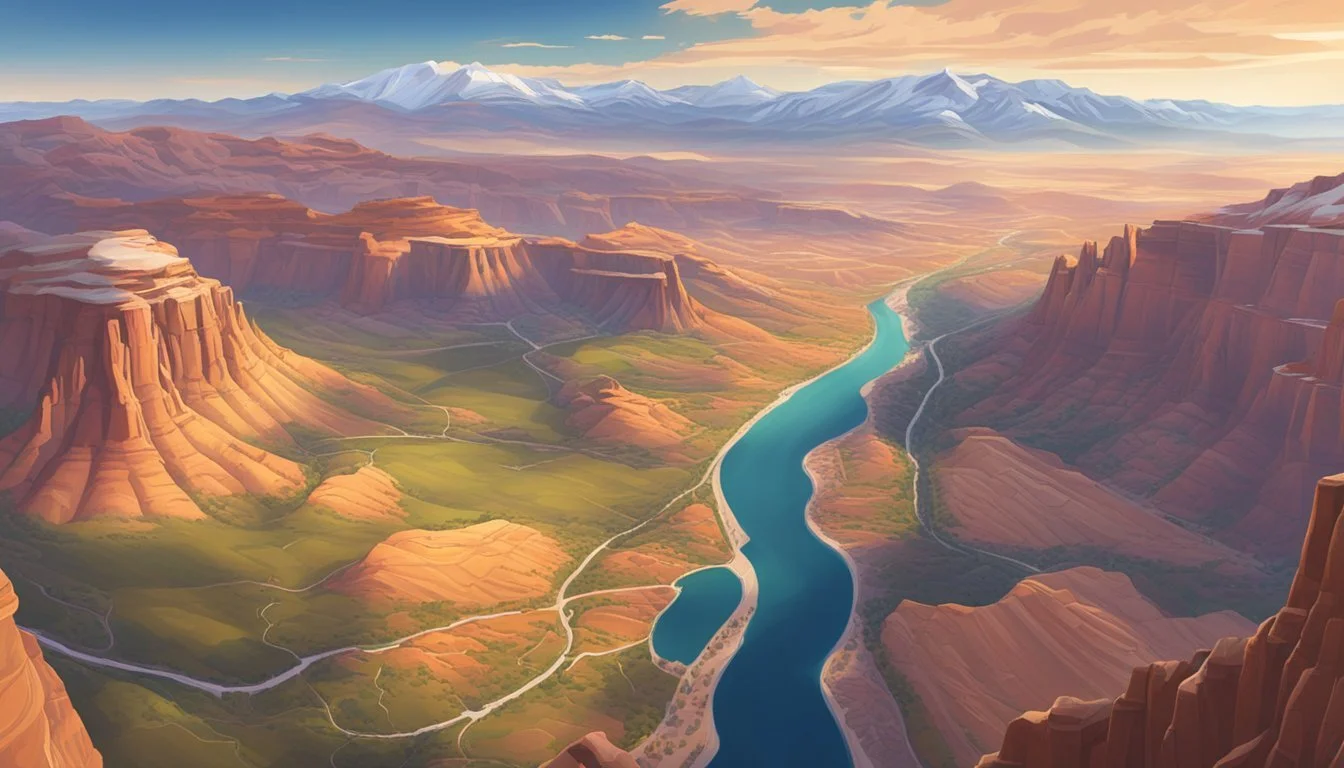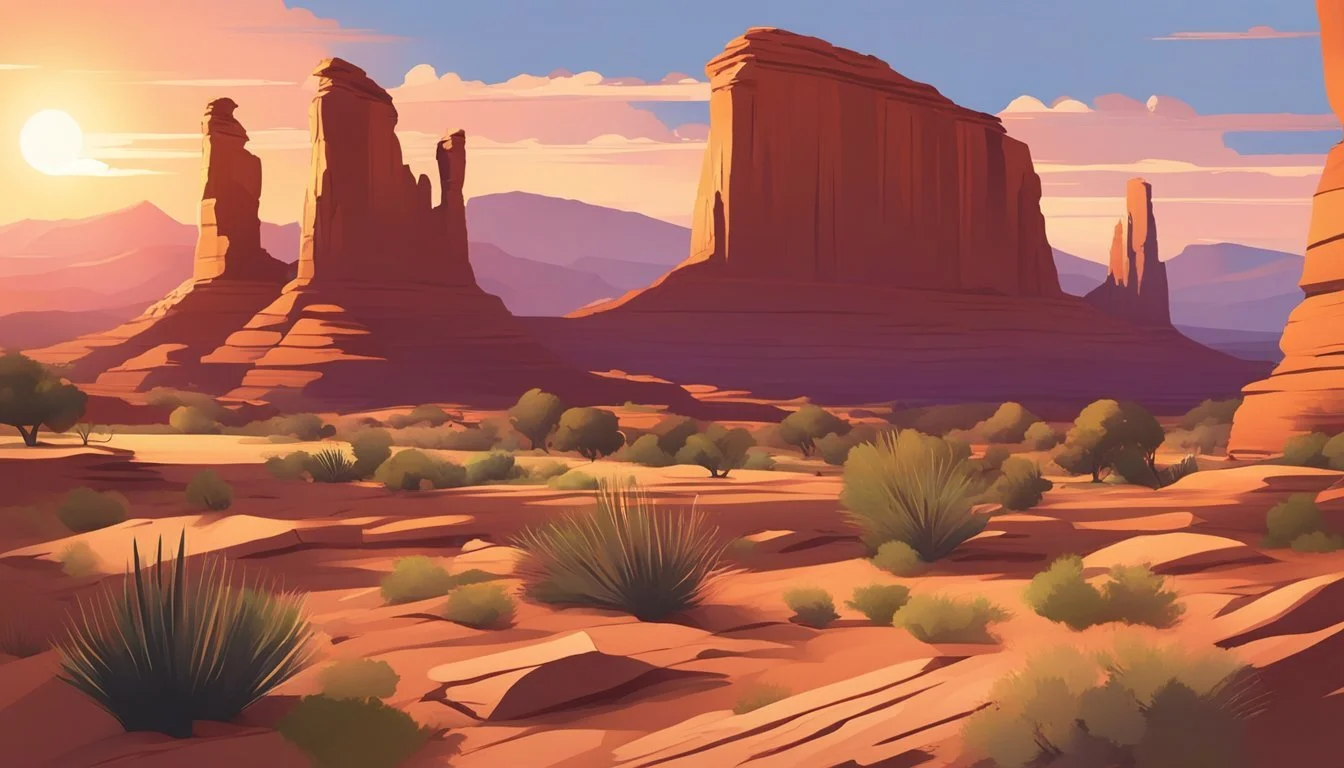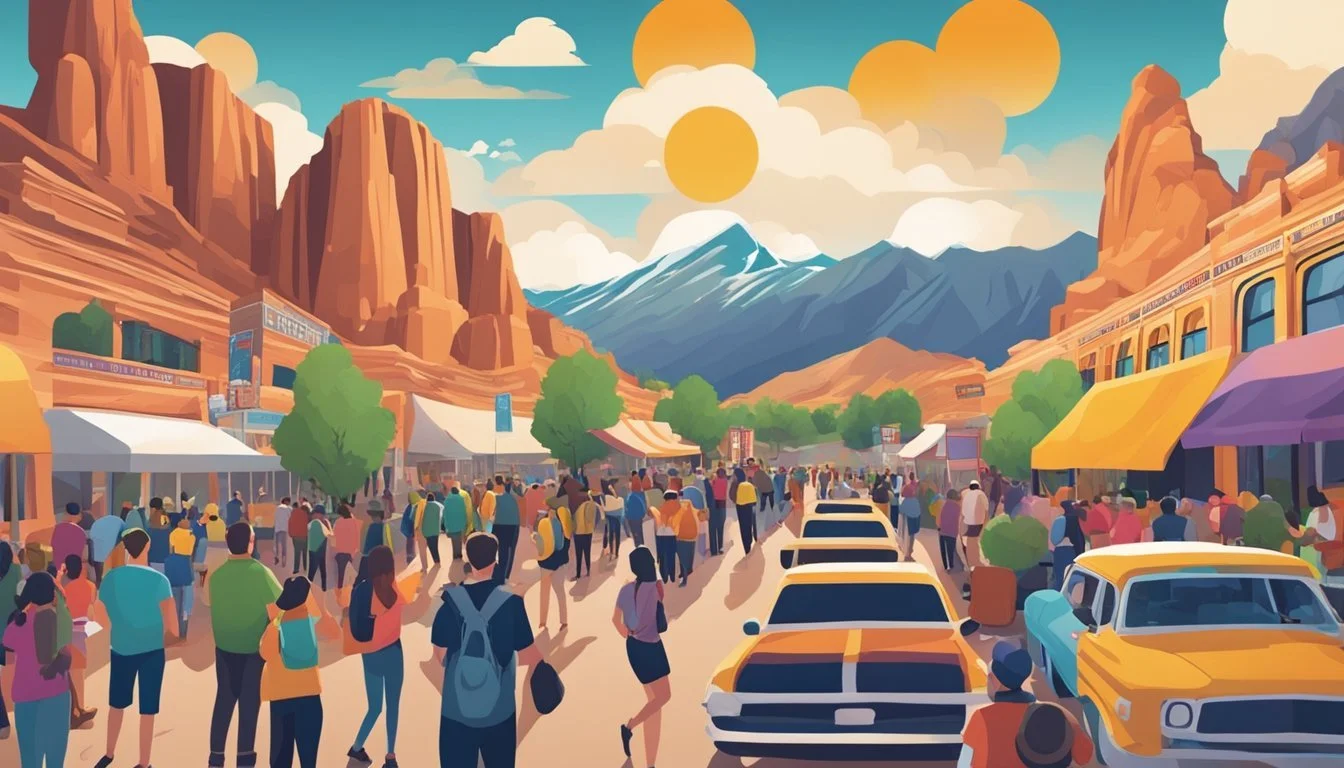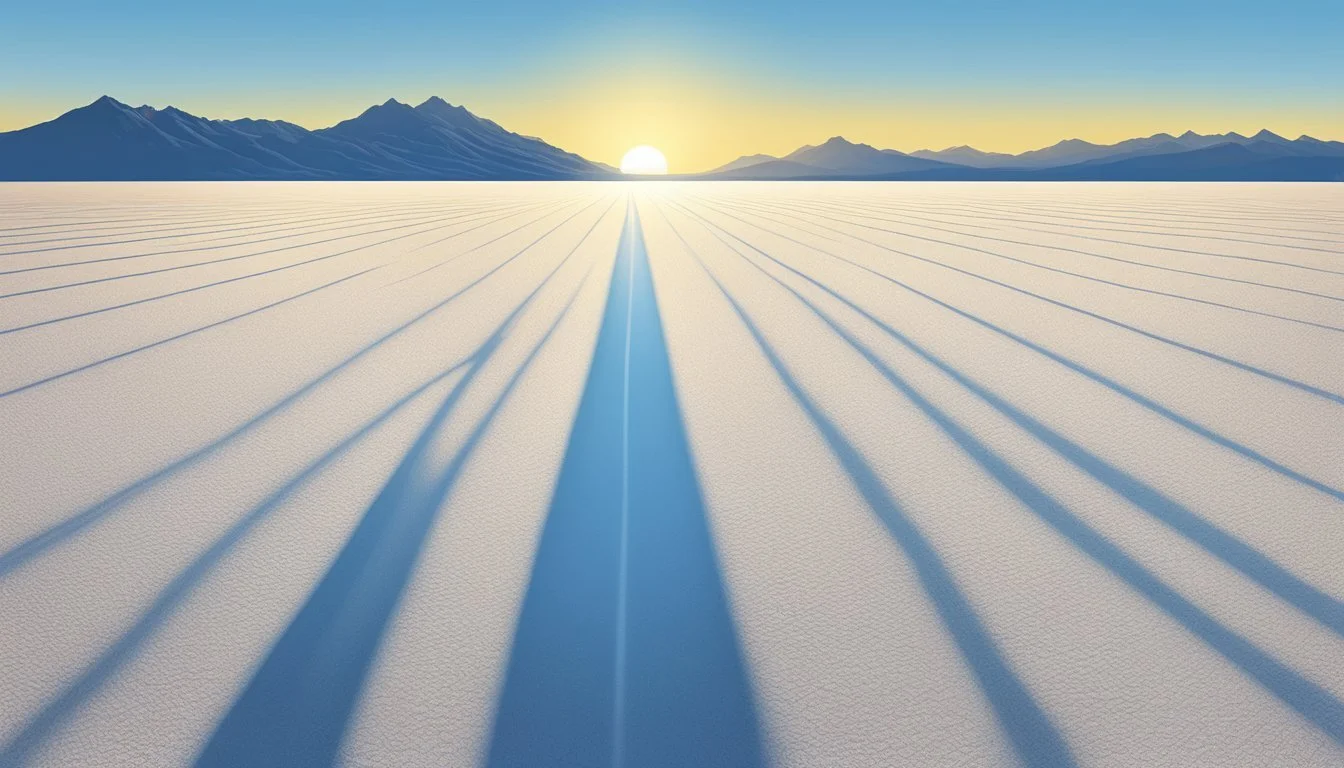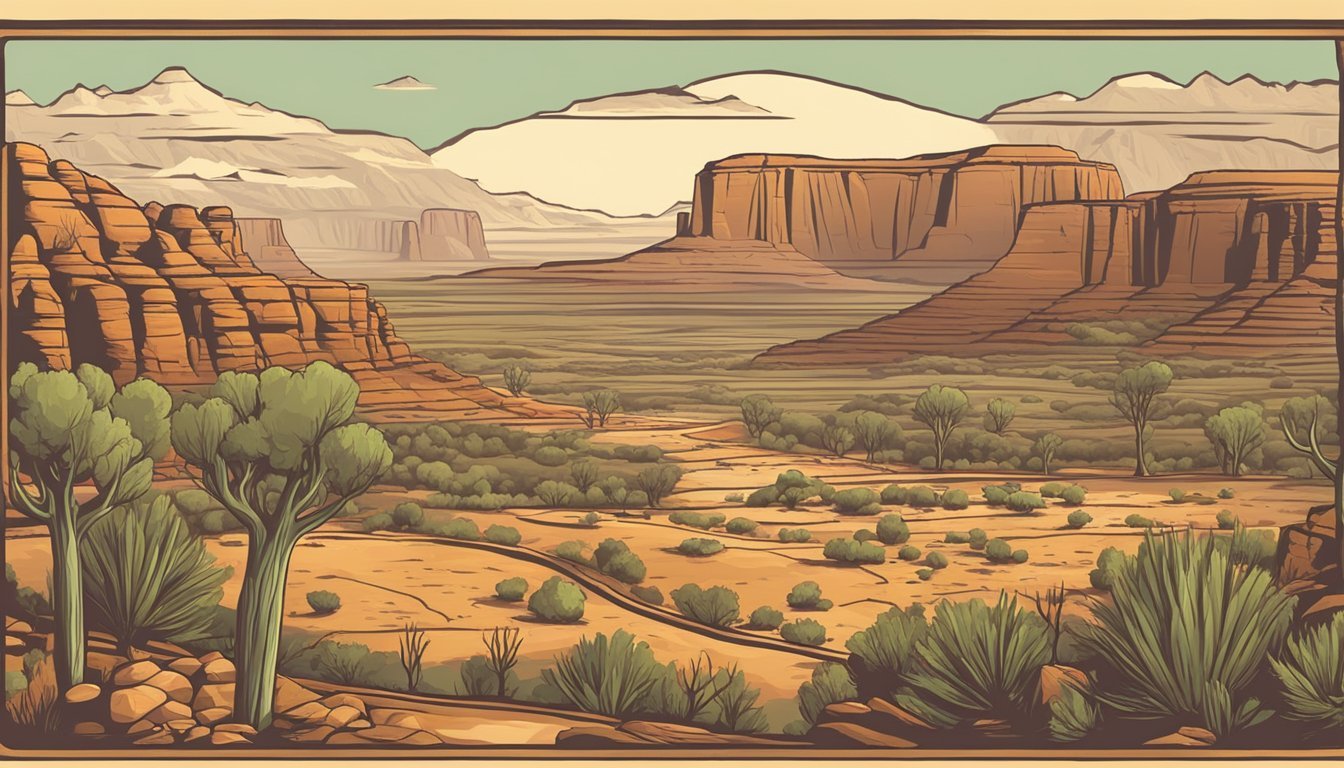8 Fascinating Documentaries About Utah
Exploring the Beehive State's Hidden Gems
Utah's diverse landscapes and rich history make it a captivating subject for documentary filmmakers. From its iconic national parks to its unique cultural heritage, the Beehive State offers a wealth of stories waiting to be told on screen.
These eight documentaries provide viewers with an in-depth look at Utah's natural wonders, historical events, and contemporary issues. Through stunning visuals and expert interviews, they explore topics ranging from the state's geological formations to its indigenous cultures and modern-day challenges. Each film offers a unique perspective on Utah's past, present, and future.
1) "Meet the Mormons" - A cultural exploration of Utah's Mormon community
"Meet the Mormons" is a feature-length documentary produced by The Church of Jesus Christ of Latter-day Saints. The film offers a unique glimpse into the lives of six diverse individuals who are members of the Mormon faith.
Released in theaters in 2014, the documentary aims to challenge traditional perceptions of Mormonism. It showcases the global reach of the religion by featuring stories from different parts of the world.
The film provides an intimate look at how these individuals balance their faith with their daily lives and personal challenges. It explores various aspects of Mormon culture, beliefs, and practices through real-life experiences.
By focusing on personal narratives, "Meet the Mormons" offers viewers a more nuanced understanding of the faith. It presents a humanizing portrayal of Mormon individuals, highlighting their diverse backgrounds and lifestyles.
The documentary serves as an educational tool for those unfamiliar with Mormonism. It also provides insight into the significant role the religion plays in Utah's cultural landscape.
2) "The Canyonlands: A Flowing History" - Discover Utah's natural wonders
"The Canyonlands: A Flowing History" takes viewers on a journey through Utah's stunning Canyonlands National Park. This documentary explores the geological forces that shaped the region's iconic red rock formations and deep canyons over millions of years.
The film showcases the park's diverse landscapes, from towering mesas to winding rivers. It highlights the Colorado and Green Rivers, which have carved intricate patterns into the desert terrain.
Viewers learn about the area's unique flora and fauna, adapted to survive in the harsh desert environment. The documentary also examines the park's cultural significance to Native American tribes who have inhabited the region for thousands of years.
Expert geologists and park rangers provide insights into the ongoing erosion processes that continue to shape Canyonlands. The film uses time-lapse photography to illustrate these gradual changes over time.
"The Canyonlands: A Flowing History" offers breathtaking aerial views of the park's vast wilderness. It captures the play of light and shadow across the landscape at different times of day, revealing the ever-changing beauty of this natural wonder.
3) "City Without a Face: Life in Salt Lake City" - Insights into urban Utah
"City Without a Face" offers a unique glimpse into the complexities of Salt Lake City's urban landscape. The documentary explores the city's rapid growth and transformation in recent years.
Viewers are introduced to diverse neighborhoods, from the historic downtown area to newer suburban developments. The film showcases the city's blend of modern architecture and preserved historical buildings.
Salt Lake City's religious influence is examined, highlighting how it shapes local culture and community dynamics. The documentary also delves into the city's evolving demographics and the impact of new residents on its social fabric.
Economic factors driving the city's expansion are explored, including the thriving tech industry and outdoor recreation tourism. The film addresses challenges faced by the growing metropolis, such as air quality concerns and housing affordability.
"City Without a Face" presents interviews with long-time residents, recent transplants, and city officials. These diverse perspectives provide a well-rounded view of life in Utah's capital city.
The documentary captures Salt Lake City's unique position as a urban center surrounded by natural beauty. It showcases how residents balance city living with easy access to outdoor activities in nearby mountains and parks.
4) "Mystic Monuments: Native American Sites in Utah" - Ancient history revealed
"Mystic Monuments: Native American Sites in Utah" explores the rich archaeological treasures scattered across the state's diverse landscapes. The documentary takes viewers on a journey through time, uncovering the stories of ancient civilizations that once thrived in the region.
The film showcases iconic sites like the Bears Ears National Monument, home to thousands of Native American artifacts and rock art panels. Viewers learn about the intricate petroglyphs and pictographs that adorn canyon walls, offering glimpses into the spiritual beliefs and daily lives of past cultures.
Expert archaeologists and tribal elders provide insights into the significance of these sacred places. The documentary examines the architectural marvels of Ancestral Puebloan cliff dwellings, including those found in Hovenweep National Monument.
Through stunning visuals and detailed explanations, the film highlights the advanced knowledge of astronomy and engineering possessed by these ancient societies. It also addresses the ongoing efforts to preserve and protect these invaluable cultural sites for future generations.
"Mystic Monuments" offers a captivating look at Utah's Native American heritage, shedding light on the enduring legacy of its first inhabitants.
5) "Utah Conversation: The Environmental Challenge" - Voices on environmental issues
"Utah Conversation: The Environmental Challenge" presents a compelling exploration of environmental issues facing the state. The documentary features interviews with local activists, scientists, and policymakers.
Viewers gain insight into Utah's unique ecological challenges, including air quality concerns in the Salt Lake Valley and water scarcity in the arid climate. The film examines the impacts of urbanization and industry on natural habitats.
Climate change effects on Utah's landscapes and ecosystems are discussed by experts in the field. They share data on shifting weather patterns and their consequences for wildlife and agriculture.
The documentary also highlights conservation efforts and sustainable practices being implemented across the state. It showcases innovative projects aimed at preserving Utah's natural beauty and resources for future generations.
Through diverse perspectives, the film offers a balanced view of environmental challenges and potential solutions. It encourages dialogue among viewers about the importance of environmental stewardship in Utah.
6) "Pioneers of the Wild West: Utah Edition" - Tracing the early settlers
This documentary explores the courageous journey of Utah's first pioneers. It focuses on the Mormon settlers who arrived in the Salt Lake Valley in 1847, led by Brigham Young.
The film showcases the challenges faced by these early settlers as they crossed the harsh terrain of the American West. It details their experiences with extreme weather, limited resources, and encounters with Native American tribes.
Viewers gain insight into the establishment of Salt Lake City and the surrounding communities. The documentary highlights the ingenious irrigation systems developed by the pioneers to cultivate the arid land.
Personal accounts and historical records bring to life the daily struggles and triumphs of these resilient individuals. The film examines their efforts to build homes, establish farms, and create a new society in the wilderness.
"Pioneers of the Wild West: Utah Edition" also touches on the conflicts and collaborations between Mormon settlers and other groups in the region. It provides a balanced view of the complex relationships that shaped early Utah history.
7) "Sundance: Transforming Film and Culture" - The impact of the famous festival
The Sundance Film Festival has become a cultural phenomenon since its inception in 1978. Founded by Robert Redford, the event takes place annually in Park City, Utah, attracting filmmakers, actors, and cinema enthusiasts from around the world.
Sundance has played a crucial role in launching the careers of numerous independent filmmakers. It has provided a platform for groundbreaking films that might not have found mainstream distribution otherwise.
The festival's impact extends beyond the film industry. It has transformed Park City into a vibrant cultural hub during the event, boosting the local economy and tourism.
Sundance has also influenced the way audiences consume and appreciate cinema. It has popularized independent and art house films, exposing viewers to diverse storytelling styles and perspectives.
The festival's reputation for discovering new talent has made it a magnet for industry professionals. Distributors and producers attend Sundance to scout for the next big hit or promising filmmaker.
Over the years, Sundance has expanded its reach through initiatives like the Sundance Institute. These programs support emerging filmmakers and foster creativity in the film industry year-round.
8) "The Bonneville Salt Flats: More Than Meets the Eye" - A unique landscape
"The Bonneville Salt Flats: More Than Meets the Eye" explores the striking landscape of western Utah. This documentary unveils the geological wonders of the vast salt pan spanning over 30,000 acres.
Viewers are transported to a seemingly alien world, where the horizon blends seamlessly with the stark white surface. The film delves into the formation of this natural marvel, explaining how ancient Lake Bonneville receded and left behind a thick crust of salt.
The documentary showcases the area's significance for land speed records. It highlights famous races and record attempts that have taken place on the flats since the early 20th century.
Beyond speed, the film reveals the salt flats' importance to local ecosystems. It examines the unique microbial life that thrives in this harsh environment and the challenges of preserving this delicate balance.
The documentary also explores the cultural significance of the Bonneville Salt Flats to Native American tribes in the region. It presents their perspectives on the land's spiritual importance and conservation efforts.
Cultural Influence of Documentaries
Documentaries about Utah have shaped public perception and increased awareness of the state's diverse cultural landscape. These films have played a crucial role in challenging stereotypes and showcasing Utah's rich history and natural beauty.
Impact on Perceptions of Utah
Documentaries have significantly altered how people view Utah. Films focusing on the state's national parks, such as those about Zion, have highlighted Utah's breathtaking landscapes and geological wonders. This exposure has led to increased tourism and a greater appreciation for Utah's natural heritage.
These films have also shed light on Utah's complex cultural history. Documentaries exploring Native American heritage in the region have educated viewers about the state's indigenous peoples and their enduring traditions.
By presenting diverse perspectives, these films have helped dispel misconceptions about Utah being a culturally homogeneous state.
Role in Promoting Diversity
Utah-focused documentaries have been instrumental in promoting cultural diversity within the state. These films have given voice to underrepresented communities, including Native American tribes and various immigrant groups.
By showcasing different cultural practices and traditions, documentaries have fostered greater understanding and acceptance among Utah's residents. They have highlighted the contributions of various ethnic groups to the state's development and cultural fabric.
These films have also sparked important conversations about inclusivity and representation in Utah society. They have encouraged viewers to embrace the state's growing multiculturalism and recognize the value of diverse perspectives.
Cinematic Techniques in Utah Documentaries
Utah's diverse landscapes and unique cultural heritage provide a rich canvas for documentary filmmakers. These elements shape the visual storytelling and narrative approaches used in documentaries about the state.
Use of Landscapes in Storytelling
Utah's striking natural scenery often plays a central role in documentaries about the state. Filmmakers frequently employ wide-angle shots to capture the expansive deserts, towering mountains, and dramatic rock formations. Time-lapse photography highlights the changing light and weather patterns across Utah's varied terrain.
Aerial cinematography reveals the scale and beauty of locations like Monument Valley and Arches National Park. Close-up shots of native plants and wildlife connect viewers to the region's ecology. Directors often juxtapose human subjects against Utah's iconic backdrops to emphasize the relationship between people and place.
Narrative Styles and Their Effect
Utah documentaries utilize diverse narrative techniques to engage audiences. Some films rely on traditional voiceover narration to provide historical context and factual information. Others employ a more observational style, allowing subjects to tell their own stories through interviews and candid moments.
Many documentaries incorporate archival footage and photographs to illustrate Utah's past. Reenactments bring historical events to life, especially in films about pioneer settlements or Native American history. Some directors experiment with non-linear storytelling, weaving together multiple timelines or perspectives to create a nuanced portrait of Utah life.

